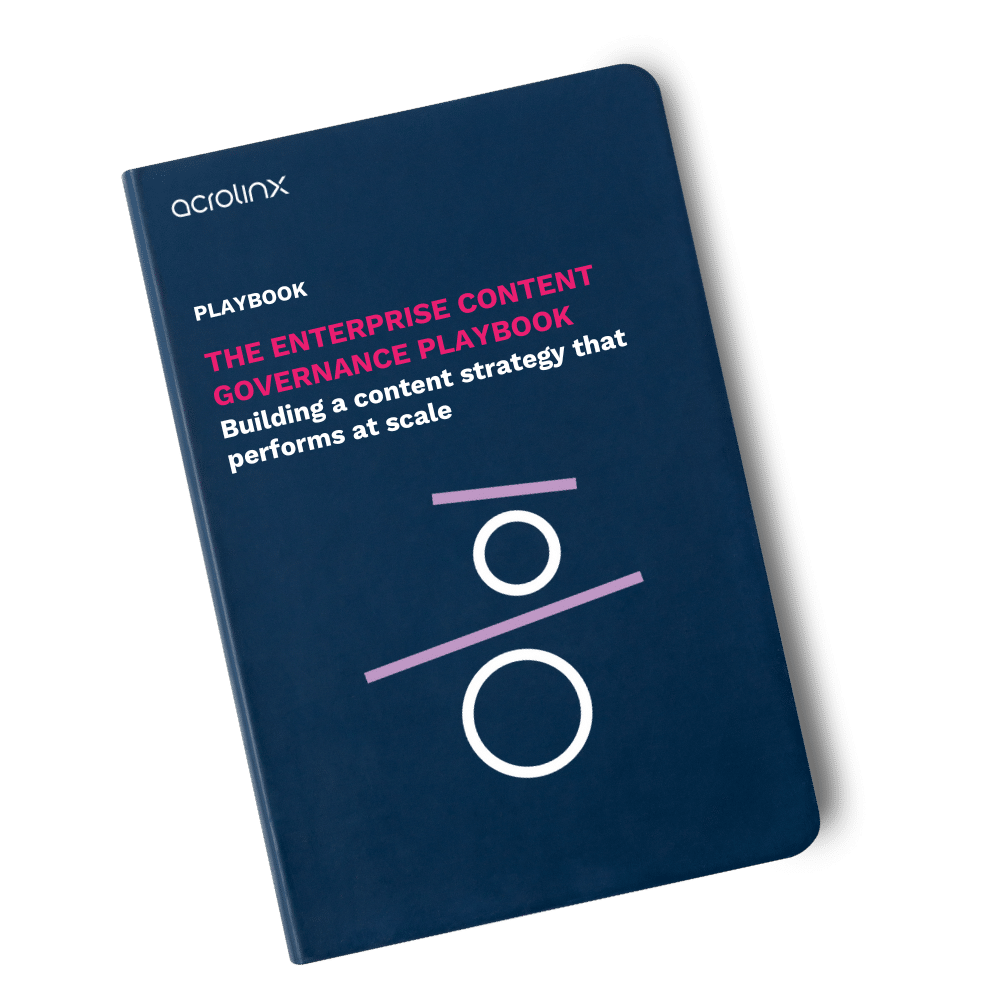Content Supply Chain Efficiency: How to Deliver Clear and Compliant Customer Communications Faster

As businesses grow, so does the complexity of their content operations. That’s why a streamlined content supply chain is crucial. When the entire process of your content efforts works as one unity, it brings structure to the chaos, makes compliance controls easier to manage, connects teams, and accelerates delivery without compromising on quality.
In this article, we’ll look at how to manage your content supply chain more efficiently and what it takes to meet customer expectations in a fast-paced digital world.
What’s a content supply chain?
The content supply chain refers to the end-to-end process of creating, managing, reviewing, and delivering content across an organisation. Just like a traditional supply chain ensures the smooth flow of goods from production to delivery, a content supply chain governs how digital assets like blog posts or social media posts for instance, move from concept to publication across multiple channels.
Managing this process efficiently is key to maintaining brand consistency, meeting customer expectations, and achieving your business goals at scale.
Why content supply chain management matters
In today’s digital landscape, content plays a central role in marketing, customer support, and overall customer experience. Content consumption has changed a lot over the recent years and is in constant flux, which means that writing guidelines and processes need to be dynamic and clear at the same time.
For organisations that produce content across various teams and platforms, it’s a challenge to stay true to their brand voice. Basically, you’d want all the content your business produces to sound the same, whether it’s posted on websites, social media platforms, or published through email marketing systems.
Without a robust content supply chain strategy, it’s nearly impossible to maintain high quality content, consistent messaging, or compliance with brand guidelines. Effective content supply chain management helps businesses streamline content creation, align efforts across departments, and safeguard brand integrity across the entire content lifecycle.

Key challenges in managing the content supply chain
Even with a solid content strategy in place, managing the entire content supply chain is complex as teams scale and the content volume increases. From disconnected systems to inconsistent processes, there are several hurdles that can slow down production, dilute brand messaging, and introduce unnecessary risks. Let’s take a closer look at the most common challenges businesses face.
Fragmented tools and processes
Many businesses rely on a patchwork of disconnected systems. These can reach from a variety of content management systems (CMS) to different project management tools. This fragmentation slows down workflows, introduces version control issues, and makes it difficult to track key performance indicators related to content quality and delivery.
Lack of cross-team collaboration
In global organisations, content creation rarely happens in one place. Creative teams, marketing departments, and compliance experts often operate across different regions, time zones, and platforms.
Without shared collaboration tools, clear responsibilities, and defined workflows, content becomes fragmented. Critical input can be lost or delayed, and inconsistencies start to creep in to tone, terminology, or messaging. For international teams, maintaining brand consistency across markets is a daily challenge that requires alignment at every stage of the content supply chain.
Manual review cycles and compliance bottlenecks
When quality control and compliance rely on manual processes, the content production process becomes a bottleneck. Approvals take longer, feedback loops are unclear, and teams struggle to deliver content efficiently, particularly across multiple languages or digital channels.
Risks to brand integrity and regulatory compliance
An unmanaged content supply chain increases the risk of publishing inaccurate, non-compliant, or inconsistent content. Whether it’s product descriptions, personalised customer communication, or support documentation, even minor content errors damage your brand or lead to compliance issues, especially in regulated industries.
How to optimise your content supply chain
An efficient content supply chain is the base for a structured, scalable approach that delivers the right message to the right audience at the right time. From aligning teams to integrating smart technologies, each step in the process should support both efficiency and consistency.
Build a unified content strategy
Start by aligning your content production efforts with your company’s overall content strategy. This means understanding your target audience, communicating inclusively, mapping content types to business goals, and defining roles and responsibilities within your content supply chain framework.
Break down content silos across teams
Encourage collaboration between content strategists, content writers, and reviewers. Shared access to brand guidelines, templates, and editorial calendars helps keep everyone on the same page and supports the consistent creation of digital content.
Introduce quality and compliance checks early in the process
Don’t leave quality control until the end. Incorporate tools that allow for early content checking during ideation, drafting, and editing stages. That way, quality issues and compliance risks are addressed before they disrupt the supply chain.
Use AI and automation to scale content review
AI-powered tools such help analyse content in real time, ensuring it aligns with your brand guidelines, tone of voice, and regulatory standards. This speeds up the content approval process and significantly reduces manual effort when managing high content volumes across multiple platforms.
Create governance standards that apply to both human- and AI-generated content
With the growing use of generative AI in content creation, governance becomes more complex and at the same time, more critical. Define clear content governance policies that ensure all content, regardless of source, meets your standards for clarity, consistency, and accuracy.

The impact of efficient content supply chain management
A smooth content supply chain helps your organisation maintain consistency across channels, reduce time-to-market, and improve collaboration between departments. The result is more relevant, engaging, and compliant content that resonates with your audience and strengthens your brand.
When marketing and support teams can easily retrieve content assets, content requests are processed faster. New hires spend less time searching for guidelines, and your content performance improves thanks to more centralised management and continuous improvement.
How Acrolinx supports content supply chain efficiency at scale
Acrolinx is purpose-built to support your content operations across the entire content lifecycle. Our automated content-government platform integrates directly into your content management systems and authoring environments, enabling real-time content governance that fits into your existing workflows.
Whether you’re creating content for social media, product pages, or support documentation, Acrolinx validates content against your company’s brand guidelines and strategic goals. It ensures that your content is accurate, consistent, and on-brand — no matter who creates it.
From generating content briefs to analysing existing content for gaps and opportunities, Acrolinx enables content teams to drive continuous improvement and deliver content with confidence. It’s the intelligent way to manage a complex, multi-channel content supply chain without having to sacrifice quality or control.
Learn more about how Acrolinx improves your content supply chain in our guide.
Are you ready to create more content faster?
Schedule a demo to see how content governance and AI guardrails will drastically improve content quality, compliance, and efficiency.
The Acrolinx Team





